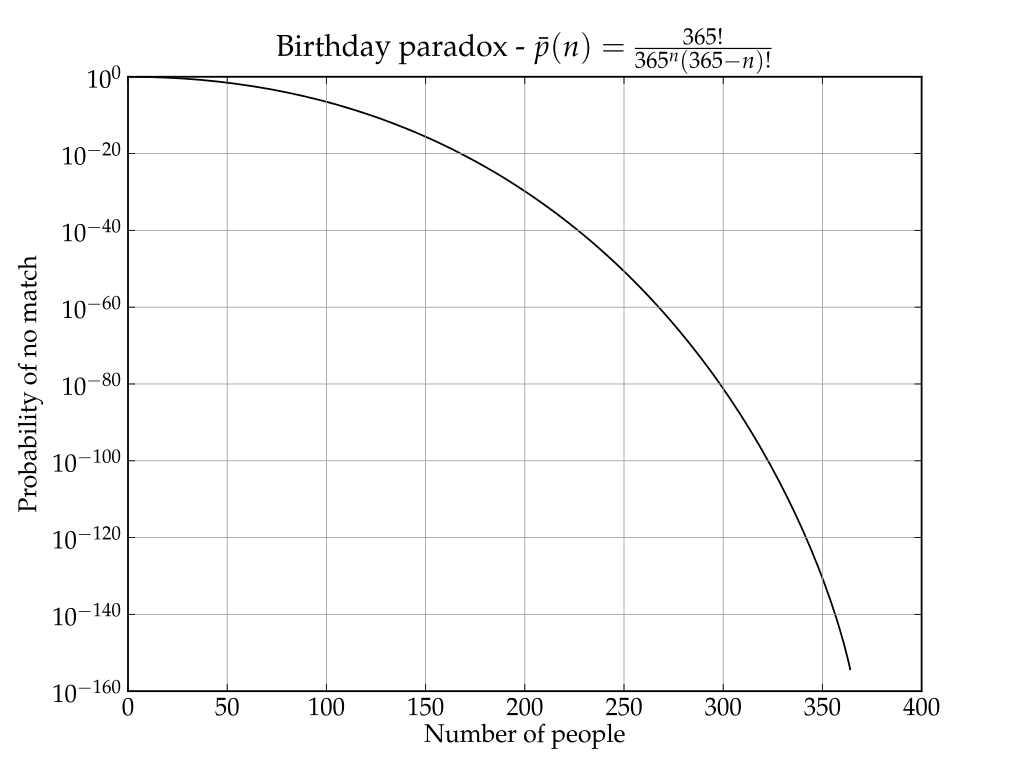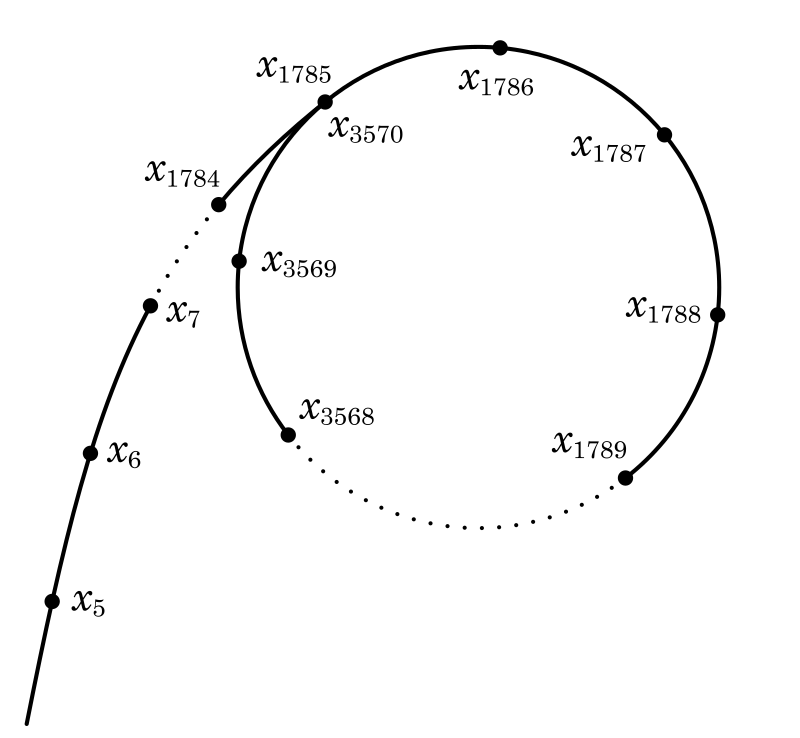Pollard's rho method笔记
Pollard's rho method
原理
生日悖论
在概率论中,生日问题要求在一组随机选择的 \(n\) 个人中,至少有两人生日相同的概率。生日悖论指的是违反直觉的事实,即该概率超过 50% 只需要 23 个人 。
从条件概率原理的角度来看,可以知道 \[ \begin{align} \bar{p}(n)&=1\times\left(1-\frac{1}{365}\right)\times\left(1-\frac{2}{365}\right)\times\cdots\times\left(1-\frac{n-1}{365}\right)\\ &=\frac{365\times364\times\cdots\times(365-n+1)}{365^n}\\ &=\frac{_{365}P_n}{365^n} \end{align} \] 其中 \(_kP_n\) 表示排列。

rho method
假设 \(N=pq\),其中 \(p\) 为 \(N\) 的一个非平凡因子,使用一个模 \(N\) 多项式 \(g(x)\) 生成随机序列 \(\{x_i\mod{N}\}\)。
选择一个初始值 \(x=2\),计算 \(x_1=g(2),x_2=g(g(2)),\cdots\)。
由于其为模 \(N\) 多项式生成的序列值,故序列值必会重复。
而由生日悖论的原理可以知道,\(x_i\) 重复出现的概率为 \(O(\sqrt{N})\)。所以对于序列 \(\{x_i\mod{p}\}\) 会更早地出现重复值。
当找到 \(x_{i1}\neq x_{i_2}\) 但 \(x_{i1}= x_{i_2}\pmod{p}\) 时,\(|x_{i1}-x_{i_2}|\) 即为 \(p\) 的倍数。
由于序列中的每个值只依赖于它之前的值,且构成的循环画在图上就像是希腊字母
\(\rho\) 一样,故称为
rho method。

该算法的时间复杂度为 \(\displaystyle{O(N^{\frac{1}{4}}+\frac{N^{\frac{1}{4}}\alpha(N)}{\beta}+\beta\alpha(N))}\)。
Floyd 判环法
Floyd 判环法又称龟兔赛跑法。
我们让 \(t,h\) 指向起始序列值(一般选取 2),让 \(t\) 和 \(h\) 的移动速度不同,即每次 \(t=g(t)\),\(h=g(g(h))\),只要二者可以前进且没有相遇,就前进下去。
当 \(t=h\) 时,可以确定已经进入到了环中。
在 rho method 中即 \(|t-h|\) 为 \(p\) 的倍数。
Brent 判环法
Brent 判环法又称传送乌龟法。
我们让 \(t,h\) 指向起始序列值,但 \(t\) 先不动,\(h\) 每次只走一步,即 \(h=g(h)\),在第 \(i\) 次中最多走 \(2^i\) 步,在二者没有相遇时就前进下去。当 \(h\) 在本次移动完毕后,将 \(t\) 移动到 \(h\) 处,即 \(t=h\)。
实现
1 | import random |
另一种判环法,效率相对高一些
1 | import itertools |